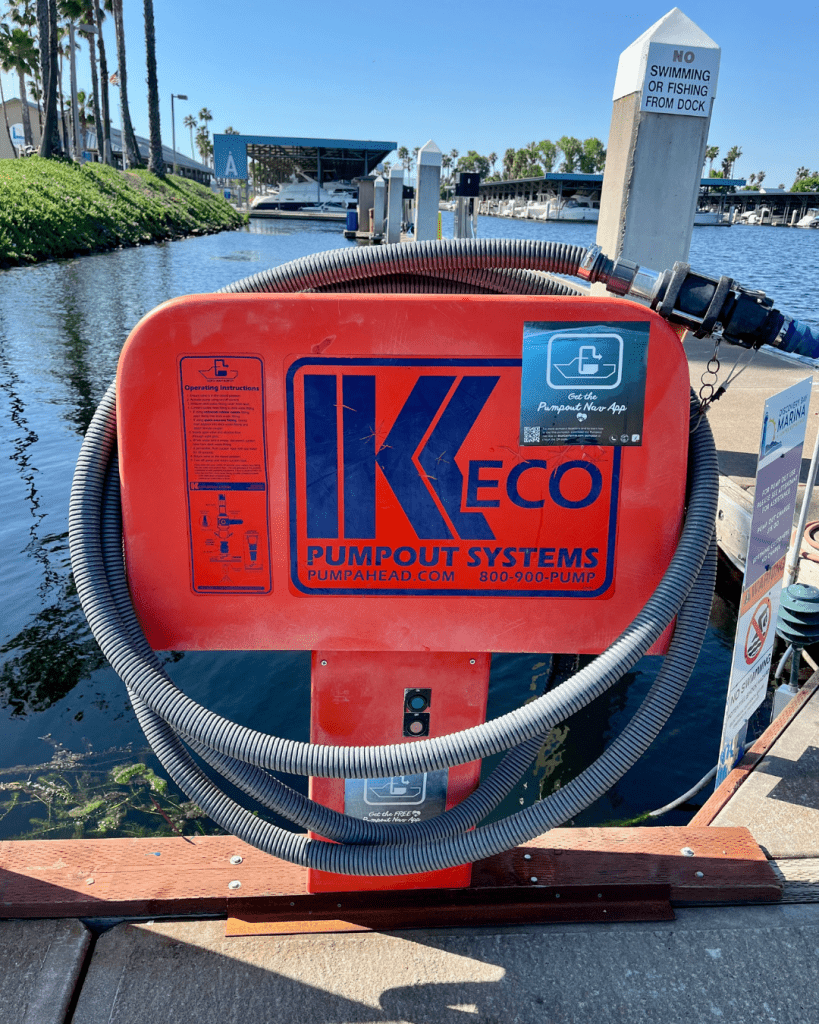How Boat Sewage Impacts Water Quality and Wildlife
August 13, 2025
California offers boaters endless opportunities to enjoy the outdoors. The Golden State has an estimated 4 million recreational boaters, boasting one of the highest rates in the United States.
With so many boaters enjoying our waterways, it’s important that Californians practice clean and safe boating. Boaters can affect the quality of the waterways they enjoy, in some cases creating environmental and human health problems when discharging sewage overboard.
That’s why boaters are encouraged to use sewage management facilities, including pumpout stations, dump stations, and floating restrooms. These are facilities where boaters can safely and responsibly dispose of sewage and are sanitary alternatives to discharging waste into the water. For vessels that have restroom facilities with holding tanks – often referred to as a “head” among mariners – boaters “pump out” at these stations.
Why human waste is bad for our waterways
You may be wondering why human sewage is so harmful to our waterways since fish and other aquatic life aren’t using these pumpout stations.
Many chemical disinfectants and deodorizers used in marine sanitation devices (sewage holding tanks) on boats contain chemicals that are harmful to humans and wildlife. Ecosystems, on the other hand, have evolved over time to accommodate waste from the animals that live in them.
Today, human waste is typically treated – via city sewer systems leading to wastewater treatment plants or septic systems – to reduce its impact before entering the local ecosystem. Even small, one-time deposits of human waste can cause localized water quality issues, especially in enclosed or poorly circulating waters. In fact, one toilet flush of untreated sewage from your boat can cause the same environmental impact as 10,000 flushes from your home toilet (San Francisco Regional Water Quality Control Board).
Improper disposal of human waste can have the following negative impacts:
- Health Risks
- Pathogen exposure – bacteria, viruses, and parasites that can cause illnesses and infections
- Waterborne diseases – such as cholera, hepatitis A, and giardiasis
- Skin and eye infections – from contact with contaminated water
- Environmental Damage
- Water contamination – making water unsafe for drinking, swimming, and recreation
- Eutrophication – excess nutrients lead to algal blooms and oxygen depletion
- Fish mortality – from low oxygen or exposure to toxins
- Habitat degradation – disrupting sensitive ecosystems like wetlands and estuaries
- Socioeconomic impacts
- Economic losses – including beach closures, fishery disruption, and high cleanup costs
- Public health – increased illness and strain on health care resources
- Water supply issues – contamination can reduce available clean water, especially in water-scarce regions
Find pumpout, dump stations, and floating restrooms near you
Using pumpout stations helps protect our water quality, wildlife, and the beautiful places we love to explore. You can find a boat sewage disposal facility near you by using the free Pumpout Nav app. It’s available for both iOS and Android devices and shows you where the closest sewage pumpout, dump station, and floating restrooms are located at participating marinas and harbors across California and other coastal locations in the U.S. The app also empowers boaters to report any problems with the pumpout and includes educational resources, including videos, environmental laws, and much more.
###


